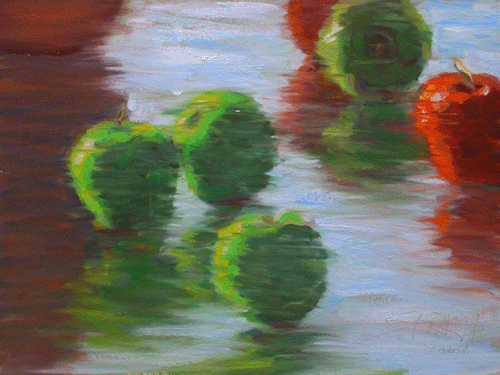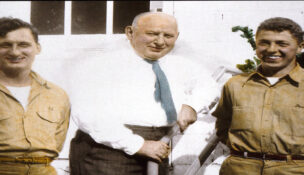

How to turn your spark into a fire
It starts with curiosity
Drew Sarka //January 14, 2016//
What inspires creative people to do what they do? Did the architect of the Eiffel Tower just awaken one morning with a clear vision of his eventual masterpiece? Perhaps he simply scribbled it onto his napkin while he was drinking his morning café au lait. Did the inky stain of the coffee that landed onto the same napkin create a shape that eventually gave way to the inspiration? Apparently Maurice Koechlin, who was one of the designers along with Emile Nouguier, made a sketch of his idea while working at home in 1884.
It does make one wonder. What spurs inspiration?
Curiosity
Before creating a fire, there needs to be a spark. Creative people know what inspires them and they use this to propel to action—that can manifest into great work. Monet and other impressionists were intrigued by the effects of light on the natural world. Monet would sometimes paint the same subject many times but in different lighting conditions and at different times of the day to better understand this concept. He was curious by the effects of light on his subject. This enthusiasm was expressed on his canvas through his choice of color and attention to composition. His haystack series is a good example of how he painted the same simple landscape in different lighting conditions—each resulting in an interesting and unique painting.
Passion
Passion gives anything we do greater meaning and it certainly fuels creativity. You are more likely to excel when you are very motivated and inspired by something that makes working on a project worthwhile. That personal investment and care for a cause fuels good work. Interestingly, there is a biologic basis for this as well. Studies show a connection exists between dopamine production and creative output. Dopamine is a neurotransmitter in your brain that influences motivational behavior. It tends to increase with positive reinforcement. Therefore, if dopamine influences our ability to do something, coupled with passion, we may be more apt to think creatively.
Observation
As an artist, I believe observation is an important stimulus to creative ideas. It is one of the first steps in creating strong artwork. You must be able to see or envision a subject, before you are able to paint it. In fact, most people assume it is the adroitness of the hand or the special twirl of the wrist that creates a beautiful brushstroke; I would argue it is actually the power of the artist’s brain and his or her ability to interpret visual subjects. The artist must observe and mentally assimilate what he or she sees first, then translate the astute observation into a beautiful brushstroke.
Writers and artists have been known to keep a journal with them at all times so they can make notes about their daily observations. These observations serve as the muse of their next artistic endeavor. I personally never travel without a sketchbook. The sketchbook may look like a mess to others but I can capture observations and jot down ideas that one day will be very useful to me when painting.
Building a natural connection
There is nowhere better to hone your skills of observation and become inspired than being in nature—especially living in Colorado. Though we may live sterile and clean lives, divorced from nature, I believe it is inherently human to be reverent and inspired by the beauty that nature has to offer. Perhaps this is what John Muir meant when he said, “The mountains are calling and I must go.”
There are so many aspects of nature that can inspire. The complexities are often balanced by the subtleties. Sometimes, it’s not what I observe in nature that inspires me, it’s how nature makes me feel. It doesn’t take long for the natural surroundings to both quiet and focus my mind. I would encourage anyone reading this to try to find the power and beauty in the outdoor world close to your own home or office.
Daydreaming
I’m also a fan of daydreaming. Daydreaming is an art in itself…well maybe not an art, but it is known that a little mental wandering can be very productive. According to Kaufman and psychologist Rebecca McMillan, this mental wandering can aid in the process of “creative incubation.” Some scientists postulate that daydreaming actually ignites an engaged mental state.
One may wonder ‘how do you purposefully daydream?’ This is a credible question. First of all, I would say that if you happen to start the process naturally, just go with the flow. Sometimes the mind takes a gentle stroll, then occasionally it skips or even leaps. I just hold on tight and enjoy the ride. Listening to music and flipping through my favorite art books tend to let my thoughts go to some interesting and fruitful places.
So what can this daydreaming produce? And what can come of all this creative thinking? It creates wonderful ideas, un-colored by day-to-day worries. Carving out these creative blocks to daydream can help create great masterpieces—just as the Eiffel tower is built of many ‘blocks’ of wrought iron.
The next time you find yourself caught between a rock and a hard place, stuck in a business rut or simply grasping for new ideas, think about what makes you curious and passionate, take a walk outside (or even around the office), intentionally observe your surroundings, reflect and let your mind wander. You’ll be surprised at how quickly you can mentally recharge and find your inspiration to do great work.


























